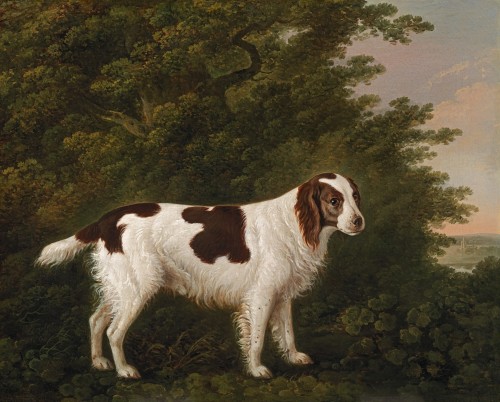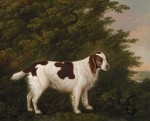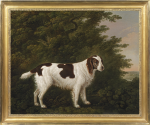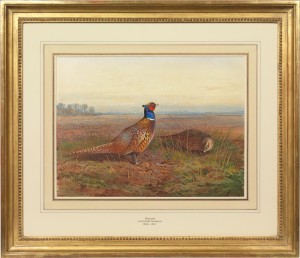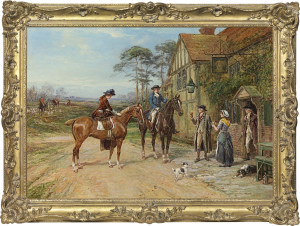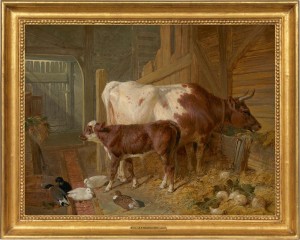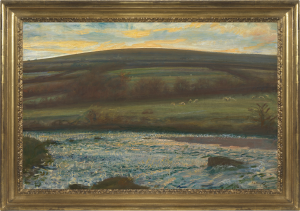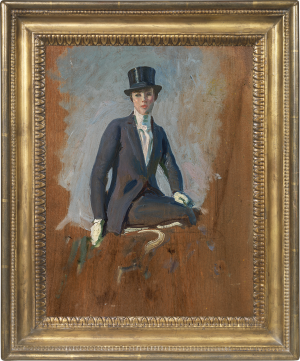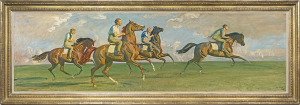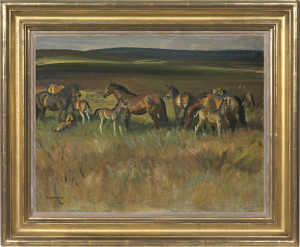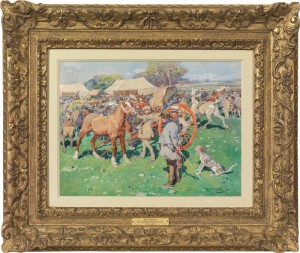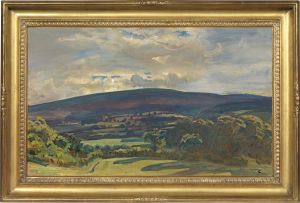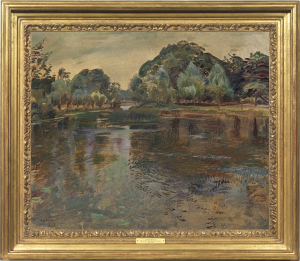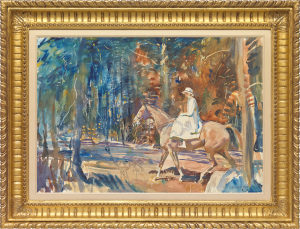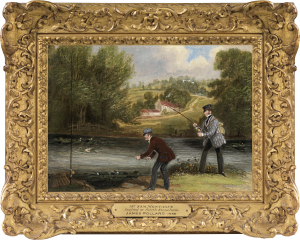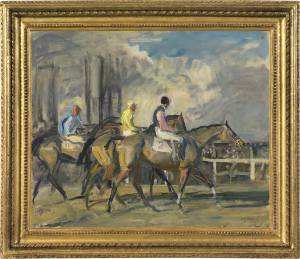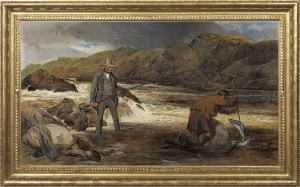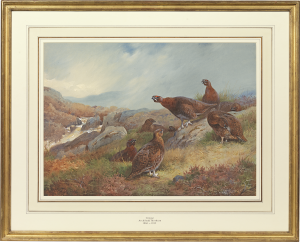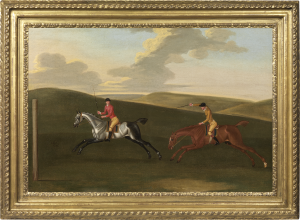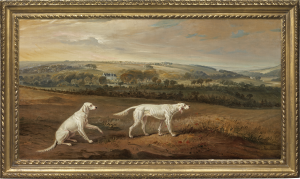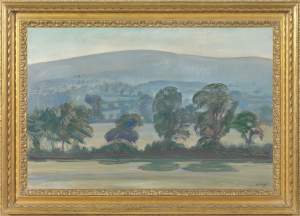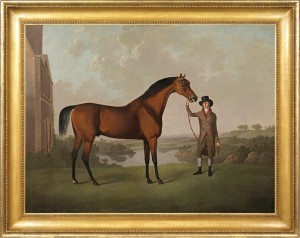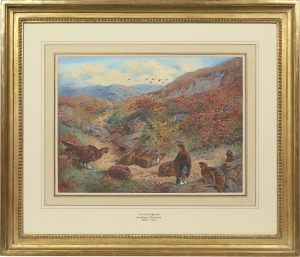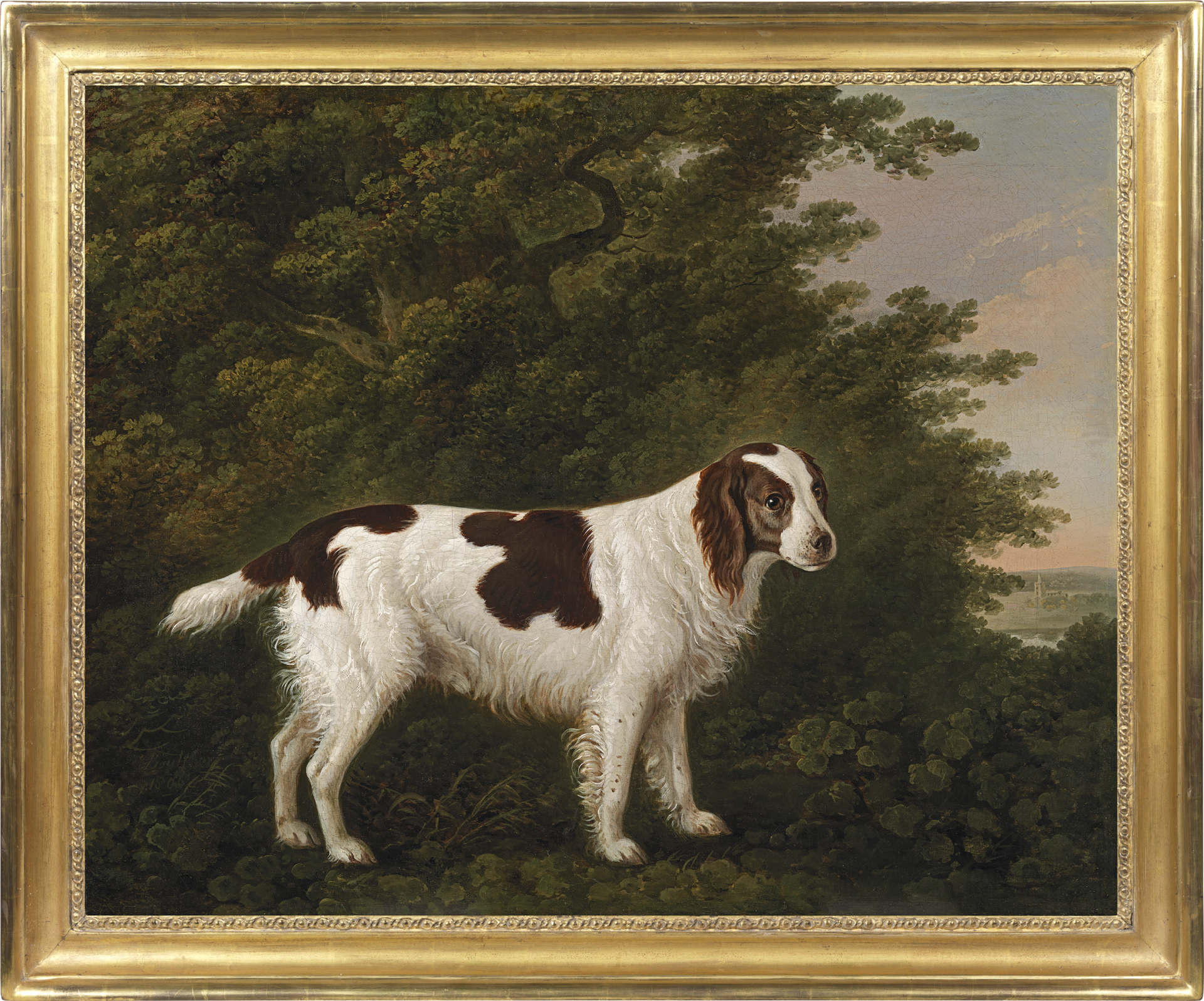John Boultbee
Portrait of a water spaniel in a landscape
Oil on canvas: 24 x 30 (in) / 61 x 76.2 (cm)
Signed and dated lower left: J Boultbee 1806
This artwork is for sale.
Please contact us on: +44 (0)20 7493 3939.
Email us
JOHN BOULTBEE
Leicestershire - Liverpool 1753 - 1812
Ref: BZ 162
Portrait of a water spaniel in a landscape
Signed and dated lower left: J Boultbee 1806
Oil on canvas: 24 x 30 in / 61 x 76.2 cm
Frame size: 28 x 34 in / 71.1 x 86.4 cm
Provenance:
Arthur Ackermann & Son Ltd., London;
by descent in a private collection, UK
Dr John Caius (1510-1573), physician to Queen Elizabeth I, naturalist and founder of Gonville and Caius College Cambridge, describes water spaniels in his De Canibus Britannicus (1570) as ‘That kinde of dogge whose service is required in fowling upon the water’[1]. They were known to be excellent divers which could retrieve lost arrows as well as fallen birds. A Norfolk man, Caius may well have grown up flighting duck on the Broads. Shakespeare in Two Gentlemen of Verona (c.1589) has Launce say of his love ‘She hath more qualities than a water-spaniel’, an indication of the relative esteem in which dogs and women were held in Tudor England (and beyond).
English water spaniels were probably an adaptation of land-based hunting spaniels, a breed thought originally to have come from Spain, hence their name. They had water-resistant curly coats, sturdy frames, long legs and large feet, useful for swimming. The Irish water dog, with denser curls all over the body, was only developed as a breed in the 1830s. Sadly, the English water spaniel had declined in popularity by the early twentieth century and does not exist as a separate breed today.
JOHN BOULTBEE
Leicestershire 1753 - 1812 Liverpool
John Boultbee specialised in animal portraiture, although he is also known to have painted landscapes. Born in Osgathorpe, Leicestershire in 1753, he was the twin brother of Thomas Boultbee (1753-1808), who became a landscape and portrait painter. The Boultbee brothers moved to London and entered the Royal Academy Schools in 1775. John first exhibited at the Free Society in 1775, the Society of Artists in 1776 and the Royal Academy from 1776-1778. He may have studied with Sawrey Gilpin (1733-1807), as they painted three of the same horses, High Flyer, Sir Peter Teazle and Gulliver. Boultbee was also greatly influenced by George Stubbs and made several copies of his works.
During the 1780s, Boultbee lived in Loughborough, Leicestershire and became acquainted with the famous pioneer of selective breeding, Robert Bakewell (1726-1795) of Dishley Grange, who commissioned him to paint many portraits of his prize pedigree livestock. His best-known animal portrait, depicting The Durham Ox (Lord Spencer Collection, Althorp), was engraved in 1802 and sold over two thousand copies in its first year of publication. Other patrons included George III, the Duke of Bedford, Lord Mount Edgecombe, Lord Spencer and the Earls of Derby and Egremont.
Boultbee later moved to Chester and finally settled in Liverpool in 1812, where he exhibited eight sporting paintings at the Liverpool Academy shortly before he died that same year.
[1] Quoted in Vero Shaw, The Illustrated Book of the Dog, London 1890, p.458.

